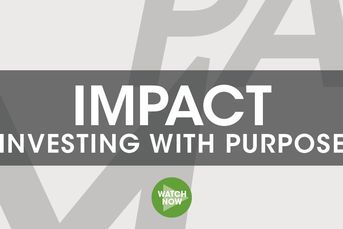Treasuries calm as debt cap approaches
The world's biggest investors are finding U.S. government bonds becoming safer, not more risky, as the deadline to avoid the first American default approaches
The world’s biggest investors are finding government bonds becoming safer, not more risky, as the deadline to avoid the first American default approaches.
The yield on 10-year U.S. bonds dropped to a two-month low of 2.58% on Oct. 3, after Treasury Secretary Jacob J. Lew said the government won’t be able to pay its debts in 14 days unless Congress raises the $16.7 trillion borrowing ceiling. While short-term bill rates and the cost to insure against a default have risen, volatility in Treasuries has fallen, a sign that investor confidence in the Federal Reserve is outweighing worries over the budget battle among U.S. political leaders.
BlackRock Inc. Chairman and Chief Executive Officer Laurence D. Fink and Pacific Investment Management Co. Co-Chief Investment Officer Bill Gross, who lead the world’s biggest bond firms, dismiss the possibility of a default after the first government shutdown in 17 years as House Republicans failed to agree on a budget with Senate Democrats and President Barack Obama. With the closures shaving at least 0.1% off economic growth each week, Fed policy makers said they will probably keep buying $85 billion a month of bonds.
“The dysfunction in Washington just makes the Fed more likely to be supportive of the market,” Mark MacQueen, a partner and money manager in Austin, Texas, at Sage Advisory Services Ltd., which oversees $11 billion, said in a telephone interview Oct. 1. “We should stick to the underlying economic fundamentals and not worry about 72 hours in Washington. The real fear of a major rate increase is diminishing as long as this nonsense continues.”
Reduced Risk
Mr. MacQueen is buying corporate bonds and mortgage securities because they are worth the risk as alternatives to Treasuries, which make up about 25% of his holdings. Investment-grade U.S. corporate bonds offer about 146 basis points, or 1.46 percentage points, of extra yield compared with government debt, according to Bloomberg indexes.
Investors are showing confidence in Treasuries by pushing down two main risk measures. Three-month volatility on five-year interest rate swaps has decreased about 35% since last month. The gauge, a measure of projected yield fluctuations over the next 90 days, dropped to 79 basis points Oct. 4, from 123 basis points reached Sept. 5.
The MOVE Index, which uses options prices to project price swings in Treasuries across a range of maturities, declined 31% to 80 on Oct. 3, from 114 on Sept. 5. The 2013 average is 72.
Treasuries were little changed last week, with 10-year yields rising 2 basis points, or 0.02 percentage point, to 2.65%, according to Bloomberg Bond Trader prices.
The yield on U.S. 10-year notes fell four basis points to 2.61% at 8:43 a.m. New York time. Mr. Lew said Congress needs to pass a debt-ceiling increase by Oct. 17 or the U.S. will be “dangerously low” on cash, speaking yesterday on CNN’s “State of the Union.”
“It’s a strange situation where the bigger the risk of the debt ceiling gets, the more Treasuries seem to benefit,” John Wraith, a fixed-income strategist at Bank of America Corp. in London said by phone today. “There’s a firm belief that ultimately this will get resolved one way or another, but in the interim it dampens the growth outlook and increases the chance the Fed will have to keep its foot down for longer.”
The 10-year yield has dropped since reaching a two-year high of 3.01% on Sept. 6. While the median estimate of more than 60 economists in a Bloomberg survey is for it to rise to 3.36% by the end of 2014, that would still leave it below the average over the past decade of 3.53%.
“What we have seen in times of crisis, whether it’s geopolitical or purely political, or economic, there tends to be a flight to quality,” James Sarni, senior managing partner in Los Angeles at Payden & Rygel, which manages $85 billion, said in a telephone interview Oct. 2. “The market is not pricing in a high probability of a default,” he said. “The market is ignoring Congress because they’ve lost confidence in them.”
The drop in Treasury yields contrasts with the increase in some European bond rates as nations there grapple with rising debt loads and political instability. During the height of the region’s sovereign crisis in 2011 and 2012, yields on 10-year notes of Greece, Ireland, Portugal, Spain and Italy all exceeded 7% according to data compiled by Bloomberg.
Europe Contrast
Italy’s 10-year note yield rose on Sept. 30 to 4.66%, the highest level since June 27 as Prime Minister Enrico Letta said he would request a confidence vote on Oct. 2 following Silvio Berlusconi’s withdrawal of support for the nation’s five-month-old administration.
The difference between U.S and Italian yields has widened to 1.67 percentage points from this year’s low of 1.36 percentage points in August. Letta won the confidence vote.
While Mr. Fink and Mr. Gross, whose firms oversee a combined $5.76 trillion, say the U.S. government will pay its debts on time, some investors are hedging their risks.
Credit-default swaps insuring against losses on U.S. Treasuries almost doubled last week to 64 basis points for one- year, according to data provider CMA, which is owned by McGraw- Hill Financial Inc. and compiles prices quoted by dealers in the privately negotiated market. A basis point equals $1,000 annually on a contract protecting $10 million of debt.
There are now 886 contracts covering a net $3.4 billion of debt, the most since March and up from an almost three-year low of $3.1 billion on Sept. 20. That compares with $13.1 billion of protection on German bunds and $16.9 billion on Italy, where one-year swaps contracts are priced at about 100 basis points.
Rates on the $93 billion in Treasury bills that mature Oct. 24 increased to 0.13% on Oct. 3 after touching negative 0.01% on Sept. 27. Rates on the $120 billion of bills maturing Oct. 17 advanced to 0.12% on Oct. 4 after falling to negative 0.01% on Sept. 17. Those rates reached 0.14% on Oct. 1, the highest since December.
Rates on one-month bills exceeded 0.18 percent in July 2011 as the U.S. was in jeopardy of defaulting because lawmakers wanted cuts to spending before raising the debt ceiling.
While bill rates are rising amid concern the government may not repay the debt on time, longer-term Treasury yields are falling as investors seek safety in case such a scenario upends financial markets.
“The market is pricing in a lot of negative scenarios right now,” said Gary Pollack, who manages $12 billion as head of fixed-income trading at Deutsche Bank AG’s Private Wealth Management unit in New York, in a telephone interview Oct. 3. “The day we have a more positive scenario, we could see higher yields, maybe 2.75 percent to 2.8 percent” on 10-year yields as investors see less of a need for safe assets, he said.
U.S. gross domestic product expanded at a 2.5% pace in the second quarter, compared with 1.1% in the previous three-month period, Commerce Department figures showed Sept. 26. Unemployment was 7.3% in August, according to the Labor Department. The September jobs report scheduled for Oct. 4 was delayed because of the shutdown.
Policy makers have said they won’t consider raising interest rates as long as unemployment exceeds 6.5% and inflation isn’t more than 2.5%. The personal consumption expenditures deflator, the Fed’s preferred gauge of inflation, increased 1.2% in August from a year earlier.
Taper Delay
A one-week partial shutdown would trim 0.1 percentage point from economic growth, according to the median estimate of economists surveyed by Bloomberg, with the amount accelerating the longer the closing lasts.
“The shutdown in Washington has a negative impact on economic activity,” said Mr. Pollack, who is buying corporate and municipal bonds. “It will probably push tapering by the Fed further out in terms of time, it will delay it.”
Federal Reserve Bank of Boston President Eric Rosengren said last week the central bank refrained from tapering its $85 billion a month in Treasury and mortgage bond purchases because growth was lower than forecast and the budget and debt-limit showdowns posed a risk to the outlook.
“Had U.S. fiscal matters not been so problematic, and incoming data on real GDP and employment stronger, it may well have been appropriate to take some action in September,” Mr. Rosengren said Oct. 2 in a speech in Burlington, Vermont.
A failure to come to terms on increasing the debt ceiling would be the first in U.S. history, said William O’Donnell, head U.S. government bond strategist at RBS Securities Inc. in Stamford, Connecticut.
“There really is no precedent that I know of in my study of history for anything that could occur at the end of this month if this becomes a train wreck,” said Mr. O’Donnell, whose firm is one of 21 primary dealers that trade with the Fed and are obligated to bid at Treasury auctions.
The government shutdown will end “very rapidly,” BlackRock’s Mr. Fink said Oct. 3 at an event hosted by the UCLA Anderson School of Management in Beverly Hills, California. BlackRock manages $3.97 trillion, according to its website.
“It’s theatrics posed by politicians to get ratings or to get their way via legislation,” said Pimco’s Mr. Gross, who manages the $250 billion Total Return Fund, the world’s biggest bond mutual fund. “It’s not a realistic proposition.”
Investors should buy three-, four- and five-year Treasury notes and Treasury Inflation Protected Securities to benefit from the market’s mispricing of when the Fed eventually increases benchmark borrowing rates, Gross said on Bloomberg Television on Oct. 1. The Total Return Fund has gained 2.5% in the past month, outperforming 98 percent of comparable funds, according to data compiled by Bloomberg.
Low yields have been driven by the Fed, which bought more than $2.3 trillion of Treasuries and mortgage-related bonds since 2008, lifting its assets to a record $3.73 trillion from less than $1 trillion five years ago. In January it began purchasing $45 billion in Treasuries and $40 billion of mortgages monthly to boost the economic recovery.
The recent drop in 10-year note yields “has much more to do with the Fed than anything else,” Gene Tannuzzo, a money manager in Minneapolis at Columbia Management Investment Advisers, which oversees $340 billion, said in an Oct. 2 telephone interview.
For about six months Mr. Tannuzzo had been betting Treasuries would drop, then he started buying in early September. He favors U.S. corporate bonds and emerging market debt.
The difference between the yields on two- and 10-year Treasuries has narrowed since Fed Chairman Ben S. Bernanke refrained from tapering. The yield curve has shrunk to 230 basis points from a more than two-year high of 255 basis points on Aug. 22, suggesting investors are embracing the Fed’s outlook of lower rates for a longer time.
“The back and forth in Washington matters little with the exception of some of the budget debates and the implication for taxes and potential for temporary default,” Ian Lyngen, a government-bond strategist at CRT Capital Group LLC in Stamford, Connecticut, said in a telephone interview Sept. 30.
CRT recommends investors buy seven- to 10-year Treasuries and sell three- to five-year debt, along with 30-year bonds.
“The market trades off of developments of economic data and the implied impact that has on Fed policy,” Mr. Lyngen said.
(Bloomberg News)
Learn more about reprints and licensing for this article.







